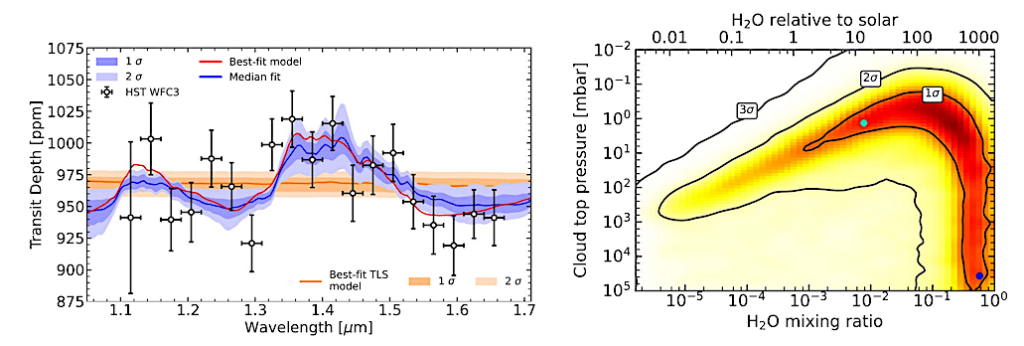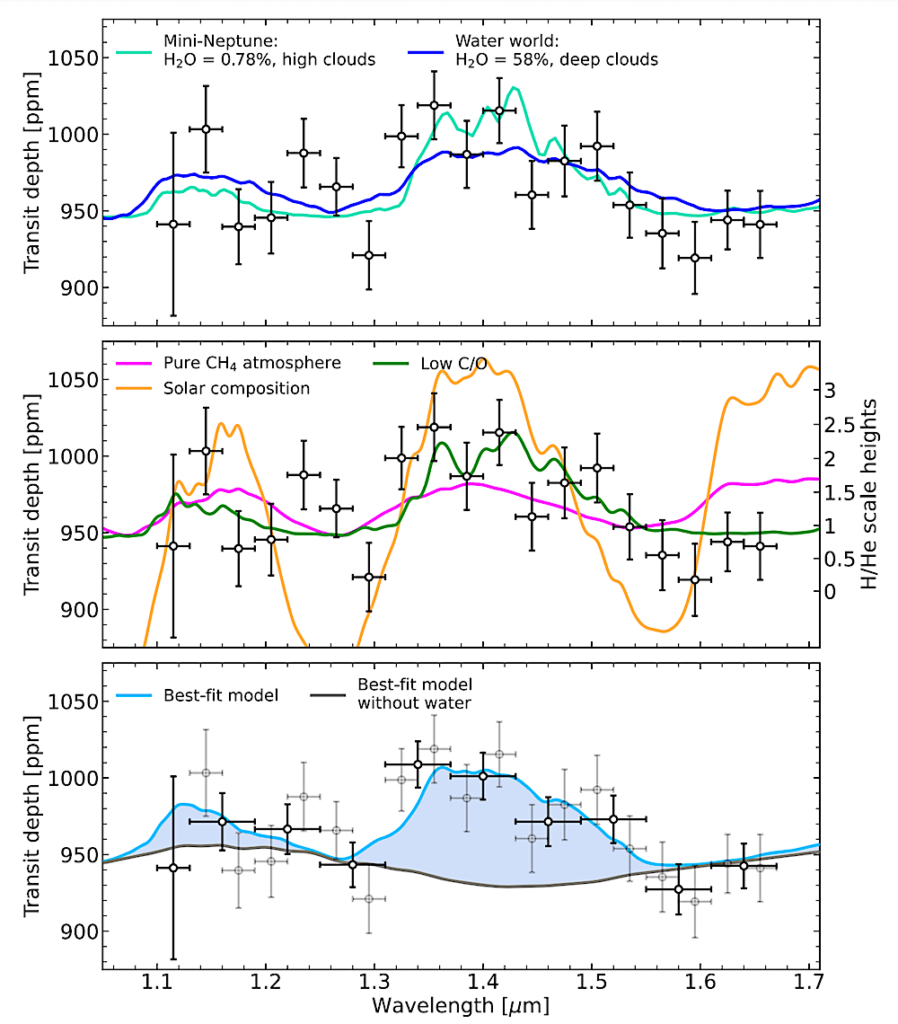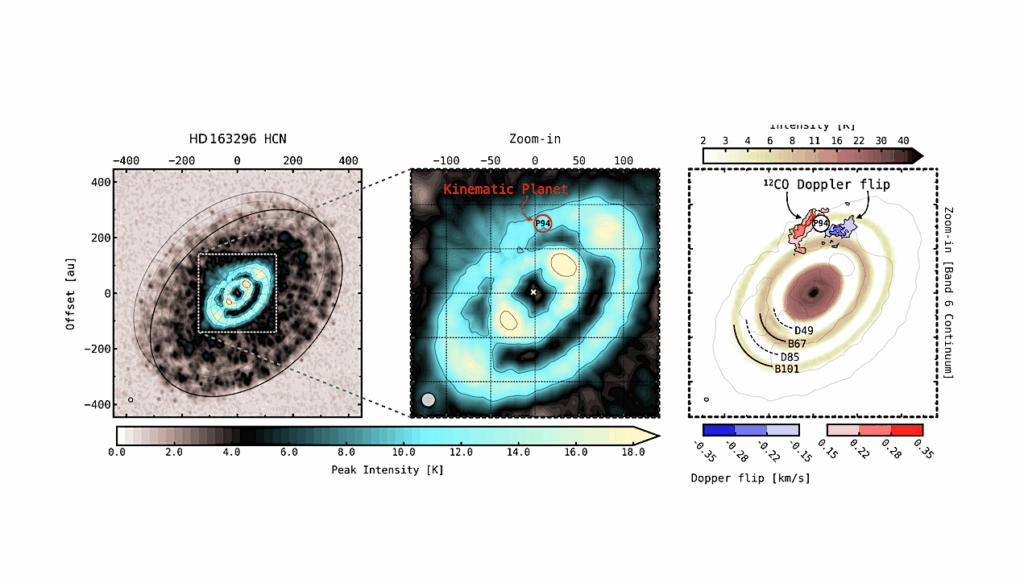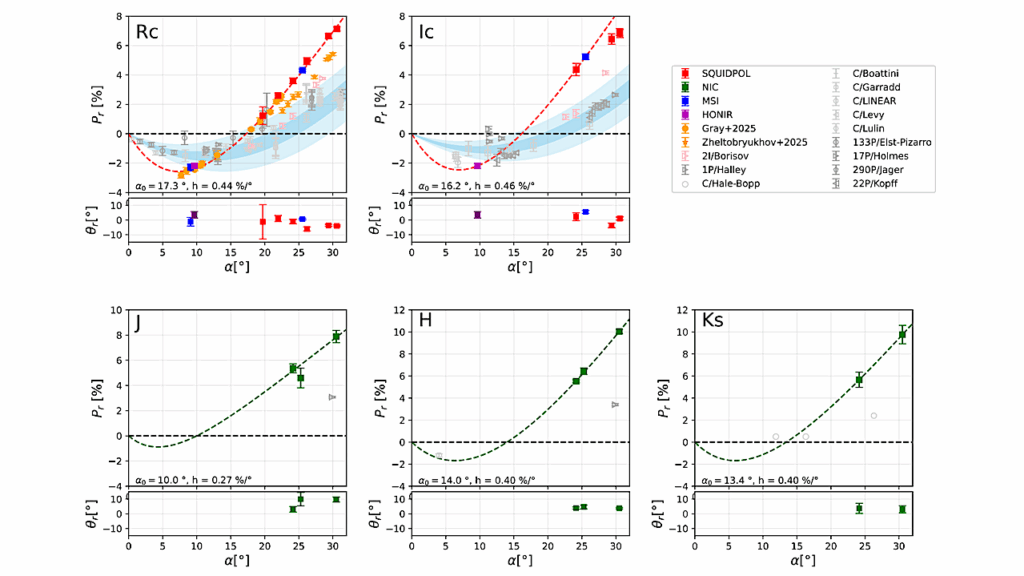Hubble Finds Water Vapour In The Atmosphere Of Small Exoplanet GJ 9827d

Astronomers are intrigued when finding evidence of water vapour on exoplanets. Based on observations with the Hubble Space Telescope, a recent example is the planet GJ 9827d, which may have a water-rich atmosphere around it.
Water is one of the most common molecules in the Universe, and all life on Earth requires it. It functions as a superior solvent and enables critical chemical reactions in biological cells. No bigger than twice Earth’s diameter, GJ 9827d could be an example of potential water-rich worlds elsewhere in our galaxy. But don’t plan on buying real estate there. The planet is as hot as Venus, which makes it a steamy world.
Using the Hubble Space Telescope (HST), astronomers, including Laura Kreidberg and Thomas Mikal-Evans from the Max Planck Institute for Astronomy (MPIA) in Heidelberg, Germany, observed the smallest exoplanet where scientists detected water vapour in the atmosphere. This planet, GJ 9872d, is located 97 light-years away in the constellation Pisces.
Water detected on the smallest exoplanet so far
“This would be the first time that we can directly show through atmospheric detection, that these planets with water-rich atmospheres can actually exist around other stars,” said team member Björn Benneke of the Trottier Institute for Research on Exoplanets at Université de Montréal, Canada. “This is an important step toward determining the prevalence and diversity of atmospheres on rocky planets.”
“Water on a planet this small is a landmark discovery,” added Laura Kreidberg, MPIA’s director of the APEx (Atmospheric Physics of Exoplanets) department. She is the co-principal investigator of the underlying HST observing program. “It pushes closer than ever to characterizing truly Earth-like worlds.”
However, it remains too early to tell whether Hubble spectroscopically measured a small amount of water vapour in a puffy hydrogen-rich atmosphere or if the planet’s atmosphere is mostly made of water, left behind after a primaeval hydrogen/helium atmosphere evaporated under stellar radiation.

Water detection in the transmission spectrum of GJ 9827 d. Left: transmission spectrum of GJ 9827 d (black points) shown with our model transmission spectrum constraints from the nested sampling atmosphere retrieval (blue) and the photometry-informed TLS retrieval (orange). The dark blue and light blue shaded regions show the 1σ and 2σ Bayesian credible intervals from the atmosphere retrieval, respectively. The atmospheric median transmission model is shown in blue, and the best-fitting model is shown in red. The best-fitting TLS model is shown in orange along with the 1σ and 2σ Bayesian credible intervals in light orange. Right: joint constraints on the cloud-top pressure vs. the water mixing ratio derived from our SCARLET well-mixed retrieval. The colored shading describes the normalized probability density as a function of the water mixing ratio (assuming uniform vertical profiles) of the atmosphere and cloud-top pressure. The black contours highlight the 1σ, 2σ, and 3σ Bayesian credible regions. The water abundance relative to a solar composition atmosphere is shown on the top axis. The posterior probability distribution allows for multiple atmospheric scenarios ranging from H2/He envelopes with small amounts of water to water-dominated envelopes. The blue points identify two representative samples of these two scenarios, which are displayed in Figure 6.
Water world or hydrogen-rich mini-Neptune?
“Our observing program, led by principal investigator Ian Crossfield of Kansas University in Lawrence, Kansas, was designed specifically with the goal to not only detect the molecules in the planet’s atmosphere but to actually look specifically for water vapour. Either result would be exciting, whether water vapour is dominant or just a tiny species in a hydrogen-dominant atmosphere,” said the science paper’s lead author, Pierre-Alexis Roy of the Trottier Institute for Research on Exoplanets at Université de Montréal, Canada.
However, given its age of approximately six billion years and proximity to its host star, GJ 9872d should have lost most of its primordial hydrogen due to the intense irradiation, likely leaving behind an atmosphere dominated by water vapour. In addition, any attempt to detect hydrogen signatures failed so far.
“Until now, we had not been able to detect the atmosphere of such a small planet directly. And we’re slowly getting in this regime now,” added Benneke. “At some point, as we study smaller planets, there must be a transition where there’s no more hydrogen on these small worlds, and they have atmospheres more like Venus, which is dominated by carbon dioxide.”
A hot, inhospitable world
Because the planet is as hot as Venus, at 400 degrees Celsius, it definitely would be an inhospitable, steamy world if the atmosphere were predominantly water vapour.
At present, the team is left with two possibilities. The planet is still clinging to a hydrogen-rich envelope laced with water, making it a mini-Neptune. Alternatively, it could be a warmer version of Jupiter’s moon Europa, which has twice as much water as Earth beneath its crust. “The planet GJ 9827d could be half water, half rock. And there would be a lot of water vapour on top of some smaller rocky body,” said Benneke.
Suppose the planet has a residual water-rich atmosphere. In that case, it must have formed farther away from its host star, where the temperature is lower than at its present location and water is available as ice. In this scenario, the GJ 9827d would have migrated closer to the star and received more radiation, turning the ice into water and vapour. The hydrogen was heated and escaped or is still in the process of escaping the planet’s weak gravity. The alternative theory is that the planet formed close to the hot star, with a trace of water in its atmosphere.
A perfect target for Hubble and Webb
The Hubble program observed the planet during 11 transits – events in which it crossed in front of its star – spaced out over three years. During transits, starlight is filtered through the planet’s atmosphere and has the spectral fingerprint of water molecules. If there are clouds on the planet, they are low enough in the atmosphere to not hide Hubble’s view of the atmosphere completely, and the telescope can probe water vapour above the clouds.
Hubble’s discovery opens the door to studying the planet in more detail. Therefore, astronomers, including those from MPIA, have recently observed GJ 9827d with the James Webb Space Telescope. They looked for water signatures and other molecules in more detail. “We can hardly wait to see what those data reveal,” Kreidberg says. “Hopefully, we can now settle the question of water worlds once and for all.”

The HST/WFC3 transmission spectrum of GJ 9827 d (data points) along with SCARLET forward atmosphere models (colored lines). In the top panel, two samples from our well-mixed retrieval analysis (Figure 4) are shown, representing the mini-Neptune scenario with a cloudy H2/He atmosphere composed of ∼1% water (light blue) and a water world scenario with a water-rich atmosphere (dark blue). In the middle panel, a secondary atmosphere model for a pure methane envelope is also shown (magenta) in order to highlight the methane absorption features. Chemically consistent models (still assuming a uniform temperature profile) are shown for a cloud-free solar composition case (solar metallicity, solar C/O; orange) and a cloudy case with C/O = 0.1 and a 100× solar metallicity (green). The observed spectrum is inconsistent with cloud-free low-metallicity scenarios and prefers water absorption features to methane absorption features, mainly around 1.2 and 1.65 μm. The strength of the features in the spectrum is also displayed in units of H/He scale heights (right axis). In the bottom panel, the best-fit model from the retrieval analysis is shown (light blue) along with the transmission spectrum of the same model once the water opacity is turned off (gray). The contribution of water opacity to the spectral signatures is highlighted in blue. We also present a binned version of the transmission spectrum, where the points are binned together by pair with the exception of the blue-most channel.
Additional information
GJ 9827d was discovered by NASA’s Kepler Space Telescope in 2017. It completes an orbit around a red dwarf star every 6.2 days. The star, GJ 9827, lies 97 light-years from Earth in the constellation Pisces.
Water Absorption in the Transmission Spectrum of the Water World Candidate GJ 9827 d, Astrohpysical Journal etters (open access)
Astrobiology








